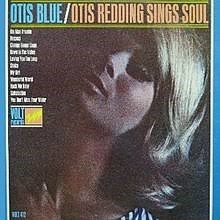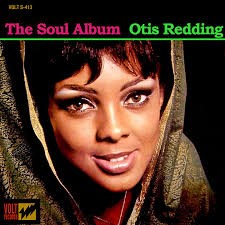Five of the best from Otis Redding
Five of the best from Otis Redding
- Otis Blue: Otis Redding Sings Soul (1965) - This album is Redding's masterpiece. It includes covers of Sam Cooke's "A Change Is Gonna Come" and the Rolling Stones' "Satisfaction," as well as original hits like "Respect" (later famously covered by Aretha Franklin). It was recorded in a 24-hour session showcasing Redding's powerful voice and emotional depth.
- (Sittin' On) The Dock of the Bay (1968) - Released just after Redding's death, this album features his most famous song of the same name, which became the first posthumous single to top the US charts. The title track represented a slight departure from his usual style, incorporating a more pop-oriented sound.
- The Soul Album (1966) - This album further cemented Redding's status as a soul icon. It includes the hit "Just One More Day" and a cover of Sam Cooke's "Chain Gang." The album showcases Redding's ability to blend R&B, soul, and elements of rock.
- Complete & Unbelievable: The Otis Redding Dictionary of Soul (1966) - Also known simply as "Dictionary of Soul," this album features the hit "Try a Little Tenderness," which became one of Redding's signature songs. It also includes his soulful interpretations of "Day Tripper" by The Beatles and "Tennessee Waltz."
- King & Queen (1967) - A duet album with Carla Thomas, this record showcases the chemistry between the two singers. It includes their hit cover of "Tramp" and a version of "Knock on Wood." This was the last studio album released during Redding's lifetime.
1. Otis Blue: Otis Redding Sings Soul (1965)

Otis Blue: Otis Redding Sings Soul, released in 1965, is a landmark soul album that showcases Redding's raw talent and emotional depth. Recorded in a marathon 24-hour session at Stax Records in Memphis, this album captures the essence of 1960s soul music. Redding's powerful vocals shine through on both original compositions and covers of contemporary hits. The album features Redding's interpretation of songs by Sam Cooke and The Rolling Stones, demonstrating his ability to infuse familiar tunes with his unique style.
Otis Blue solidified Redding's status as a soul icon and influenced countless artists across genres. Its impact on the music industry was significant, with songs like "Respect" becoming classics in their own right. The album's commercial success matched its critical acclaim, cementing Redding's place in music history. Otis Blue remains a must-listen for fans of soul, R&B, and 1960s music.
2. (Sittin' On) The Dock of the Bay (1968)

(Sittin' On) The Dock of the Bay, released in 1968, is Otis Redding's final studio album and a poignant testament to his musical legacy. This posthumous release came just months after Redding's tragic death in a plane crash, adding to its emotional weight. The album is anchored by its title track, which became Redding's biggest hit and the first posthumous single to top the US Billboard Hot 100. The song's blend of soul and folk-rock elements marked a new direction in Redding's sound, showcasing his evolving artistry.
The album features a mix of previously unreleased tracks and recent recordings, offering a glimpse of Redding's musical journey. It captures the essence of late 1960s soul music while hinting at new possibilities in Redding's repertoire. (Sittin' On) The Dock of the Bay remains a touchstone of soul music, cementing Otis Redding's status as one of the genre's greatest voices.
3. The Soul Album (1966)

The Soul Album, released in 1966, further solidified his position as a soul music icon. This Stax Records release showcases Redding's powerful vocals and emotional depth, blending R&B, soul, and elements of rock. The album features a mix of original compositions and covers, including Redding's soulful interpretation of Sam Cooke's "Chain Gang." With hits like "Just One More Day," The Soul Album demonstrates Redding's ability to convey raw emotion through his music.
The record's production, typical of the Memphis soul sound, complements Redding's voice with tight horn sections and rhythmic guitar work. The Soul Album captures Redding at the height of his creative powers, offering a perfect entry point for newcomers to his music while satisfying long-time fans. It remains a crucial piece of 1960s soul music, highlighting Redding's influence on the genre and popular music as a whole.
4. Complete & Unbelievable: The Otis Redding Dictionary of Soul (1966)

Complete & Unbelievable: The Otis Redding Dictionary of Soul, released in 1966, is a defining album and a cornerstone of 1960s soul music. This Stax Records release showcases Redding's versatility and emotional depth, featuring both original compositions and reimagined covers. The album's standout track, "Try a Little Tenderness," became one of Redding's signature songs, demonstrating his ability to build a performance from a gentle opening to a powerful, impassioned climax.
Redding's soulful interpretations of popular songs like The Beatles' "Day Tripper" highlight his skill in making any song his own. The Dictionary of Soul exemplifies the classic Memphis soul sound, with punchy horns, rhythmic guitars, and Redding's raw, emotive vocals at the forefront. This album solidified Redding's status as a soul music icon and continues to influence artists across genres. It remains a must-listen for fans of classic soul, R&B, and 1960s music.
5. King & Queen (1967)

King & Queen, released in 1967, is a collaborative album by soul legends Otis Redding and Carla Thomas. This Stax Records production showcases the dynamic interplay between Redding's raw, powerful vocals and Thomas's smooth, refined style. The album features a mix of duets and solo performances, blending classic soul with elements of pop and R&B. King & Queen's standout track, a cover of "Tramp," became a hit single and exemplifies the playful chemistry between the two artists. The album also includes soulful renditions of popular songs like "Knock on Wood," demonstrating both singers' ability to reinterpret familiar tunes.
As Redding's last studio album released during his lifetime, King & Queen holds a special place in soul music history. It captures the essence of 1960s Memphis soul, with tight horn sections and rhythmic grooves backing the vocalists. This collaboration remains a testament to Redding's versatility and his impact on the soul genre.
Recent Posts
Queen studio albums: A Review
Phil Collins Albums Ranked & Reviewed – Complete Guide to Every Studio Album
The best of Massive Attack
Let’s Make Magic
Book Your Event DJ Now




